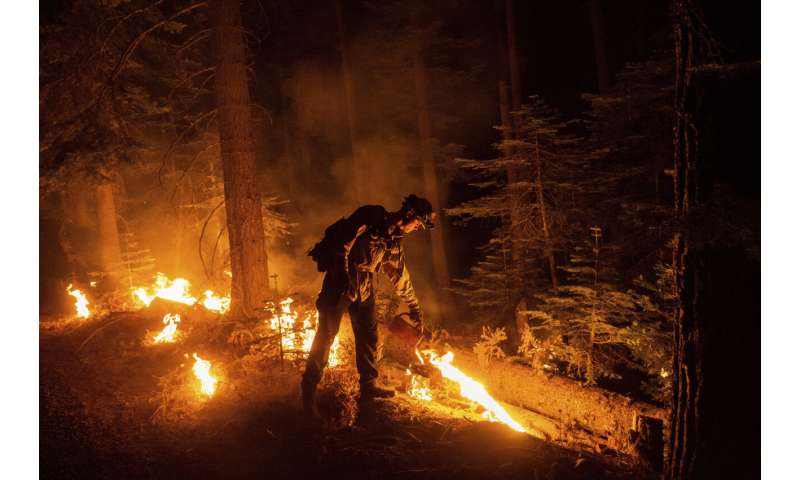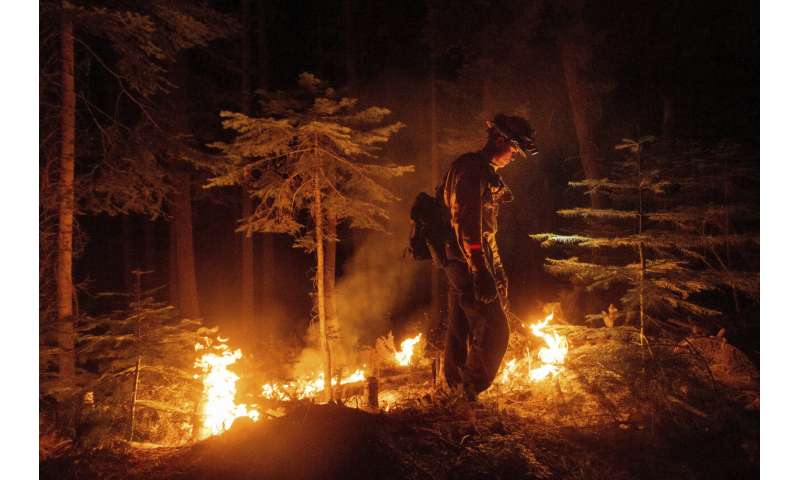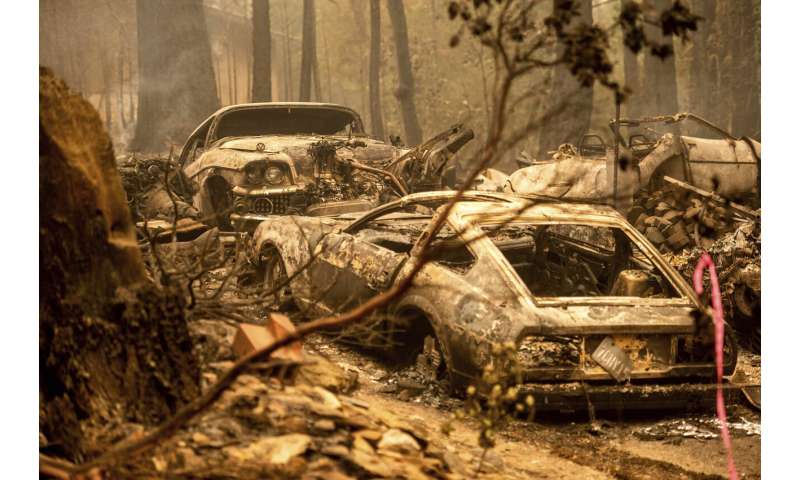Western wildfires calm down in cool weather, but losses grow
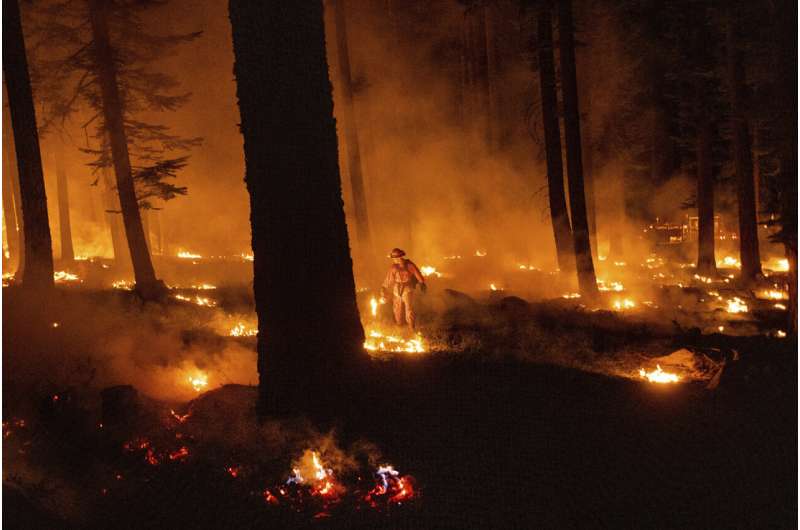
Cooler weather on Tuesday helped calm two gigantic wildfires in the U.S. West, but a tally of property losses mounted as authorities got better access to a tiny California community savaged by flames last weekend and to a remote area of southern Oregon where the nation’s largest blaze is burning.
Scientists say evidence shows Oregon’s Bootleg Fire generated its own “fire tornado” this month, with winds higher than 111 mph (179 kph). The rare phenomenon is associated with extreme fire behavior spawned by dry, hot conditions, experts said.
Meanwhile, teams reviewing damage from the massive Dixie Fire in the mountains of Northern California have so far counted 36 structures destroyed and seven damaged in the remote community of Indian Falls, said Nick Truax, an incident commander for the fire. It’s unclear if that figure included homes or smaller buildings.
The assessment was about half done, Truax said in an online briefing Monday night, and the work depends on fire activity.
The Dixie Fire has scorched more than 325 square miles (842 square kilometers), an area bigger than New York City, and it was partially contained Tuesday. More than 10,000 homes were threatened in the region about 175 miles (282 kilometers) northeast of San Francisco.
A historic drought and recent heat waves tied to climate change have made wildfires harder to fight in the American West. Scientists say climate change has made the region much warmer and drier in the past 30 years and will continue to make weather more extreme and wildfires more frequent and destructive.
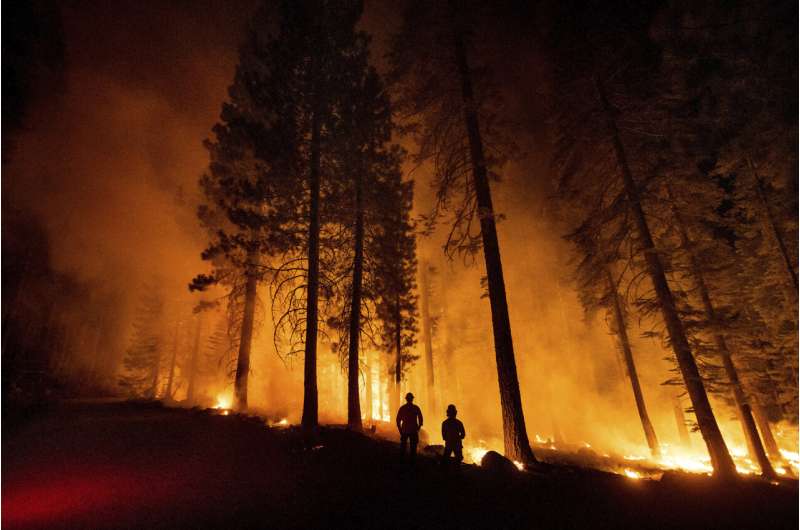
An inversion layer, which is a cap of relatively warmer air over cooler air, trapped smoke over much of the fire Monday, and the shade helped lower temperatures and keep humidity up, incident meteorologist Julia Ruthford said.
Similar smoke conditions were expected through Tuesday. Monsoon moisture was streaming in over the region but only light showers were likely near the fire. A return to hotter, drier weather was expected later in the week.
The Dixie Fire, burning mostly on federal land, is among dozens of large blazes in the U.S.
With so many fires, officials have to prioritize federal resources, said Nickie Johnny, incident commander for the Dixie’s east section, crediting help from local governments and California’s firefighting agency.
“I just wanted to thank them for that because we are strapped federally with resources all over the nation,” she said.
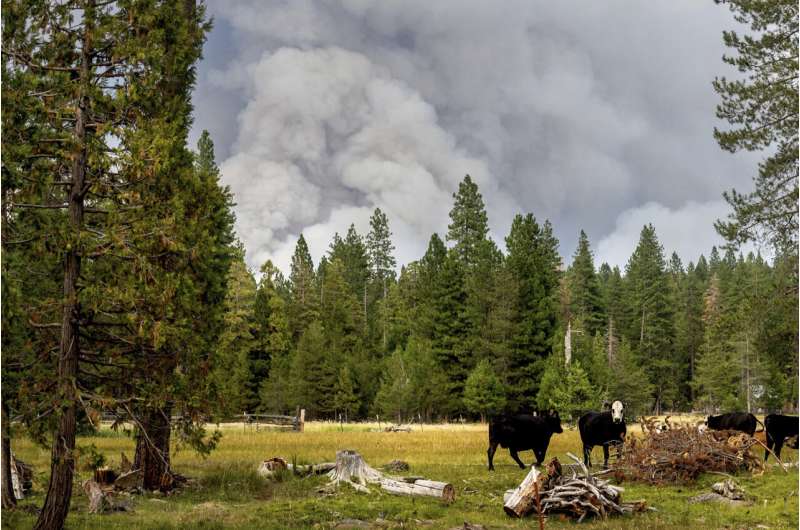
Authorities also were hopeful that cool temperatures, increased humidity and isolated showers will help them make more progress against the Bootleg Fire in Oregon. Crews have it more than halfway contained after it scorched 640 square miles (1,657 square kilometers) of remote land.
“The mild weather will have a short-term calming effect on the fire behavior. But due to the extremely dry conditions and fuels, as the week progresses and temperatures rise, aggressive fire behavior is likely to quickly rebound,” a situation report said Tuesday.
The lightning-sparked fire has destroyed 161 homes, 247 outbuildings and 342 vehicles in Klamath and Lake counties, the report said, cautioning that the numbers could increase as firefighters work through the inner area of the fire.
On July 18, a day of especially extreme fire activity, the blaze spawned a fire tornado in the Fremont-Winema National Forest, scientists say. The phenomenon occurred when smoke rose nearly 6 miles (10 kilometers) into the sky and formed giant clouds, Bruno Rodriguez, a meteorologist assigned to the Bootleg Fire, told the Herald and News of Klamath Falls, Oregon.
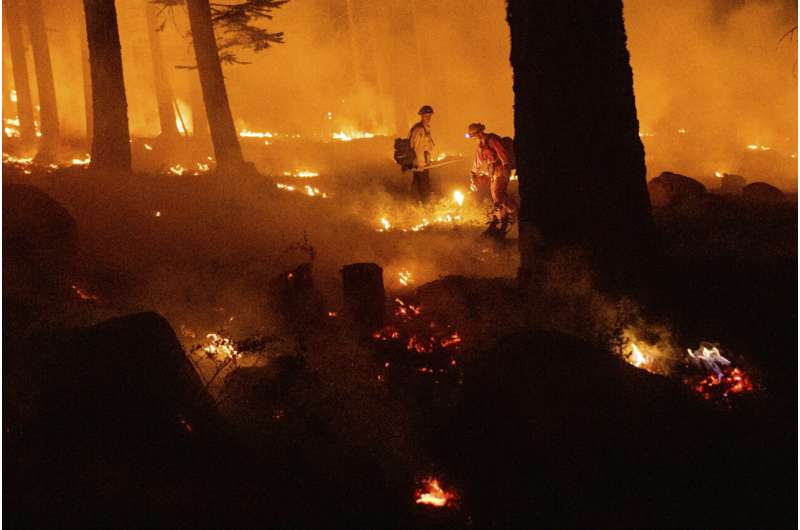
Those massive clouds, combined with intense heat from the fire, intensified the updraft and pulled rotating hot air from the Earth’s surface to the base of the clouds, creating a tornado, Rodriguez said.
Neil Lareau, a professor of atmospheric science at the University of Nevada, told the newspaper that extensive tree damage, scoured road surfaces and damage to the soil indicate winds speeds between 111 mph (178 kph) and 135 mph (217 kph).
“Prior to last year, there had only been two well-documented tornado-strength vortices generated by fires,” said Lareau, who began studying the phenomenon after fire-generated tornadoes occurred last fall. “A decade ago, we could not have even imagined this. But here we are.”
Scientists told the newspaper that fire-generated tornadoes need to urgent study because it’s suspected they can hurl embers far afield and potentially start new blazes.
-
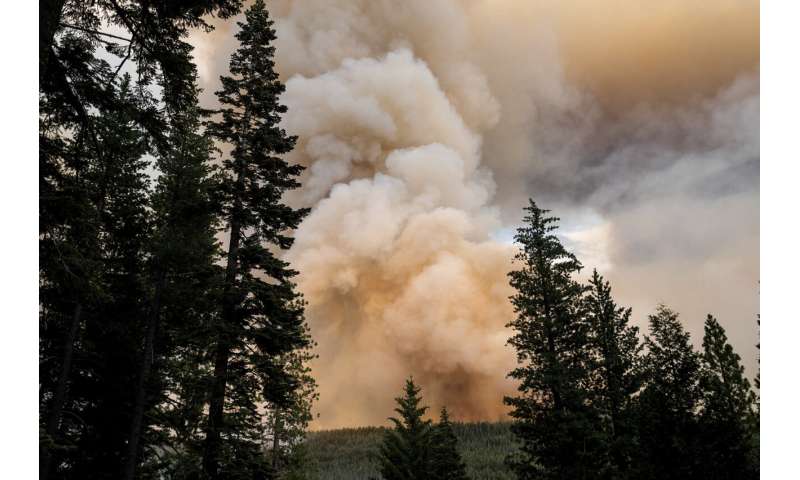
The Dixie Fire burns in Lassen National Forest, Calif., near Jonesville on Monday, July 26, 2021. Credit: AP Photo/Noah Berger
-
![Western wildfires calm down in cool weather, but losses grow]()
A firefighter uses a drip torch to ignite vegetation while trying to stop the Dixie Fire from spreading in Lassen National Forest, Calif., on Monday, July 26, 2021. Credit: AP Photo/Noah Berger
-
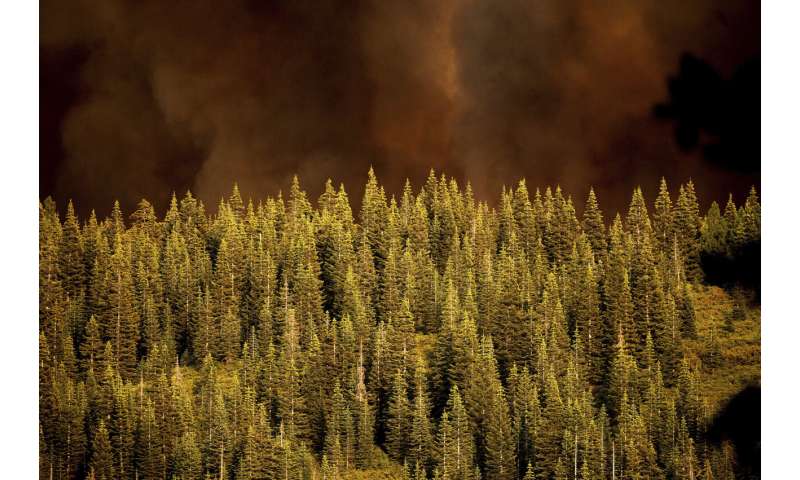
Smoke from the Dixie Fire rises over trees in Lassen National Forest, Calif., near Jonesville on Monday, July 26, 2021. Credit: AP Photo/Noah Berger
-
![Western wildfires calm down in cool weather, but losses grow]()
A firefighter uses a drip torch to ignite vegetation while trying to stop the Dixie Fire from spreading in Lassen National Forest, Calif., on Monday, July 26, 2021. Credit: AP Photo/Noah Berger
-
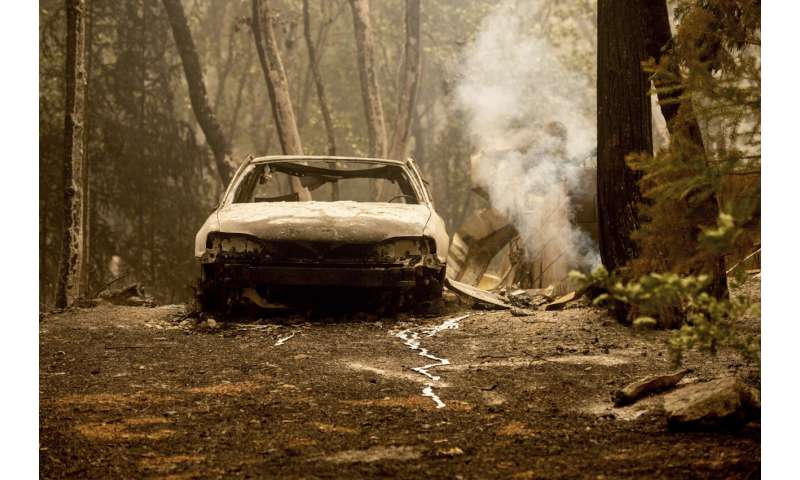
Following the Dixie Fire, a scorched vehicle rests in a driveway in the Indian Falls community of Plumas County, Calif., on Monday, July 26, 2021. Credit: AP Photo/Noah Berger
-
![Western wildfires calm down in cool weather, but losses grow]()
Following the Dixie Fire, scorched vehicles rest in a driveway in the Indian Falls community of Plumas County, Calif., on Monday, July 26, 2021. Credit: AP Photo/Noah Berger
The National Weather Service confirmed the tornado but said the agency wasn’t sure how to categorize it. That’s because, unlike a normal tornado that could travel for miles, the winds from a fire tornado will stop as soon as it gets too far from the fire’s heat.
“If they don’t have the heat from the fire, then they don’t have the updraft. Without the updraft, it would weaken very quickly,” said Ryan Sandler, a meteorologist at the National Weather Service in Medford, Oregon.
Elsewhere, high heat was expected to return to the northern Rocky Mountains, where thick smoke from many wildfires drove pollution readings to unhealthy levels.
Unhealthy air was recorded around most of Montana’s larger cities—Billings, Butte, Bozeman and Missoula—and in portions of northern Wyoming and eastern Idaho, according data from U.S. government air monitoring stations.
In California, the 106-square-mile (275-square-kilometer) Tamarack Fire south of Lake Tahoe was chewing through timber and chaparral but was more than halfway contained. Evacuation orders for about 2,000 residents on both sides of the California-Nevada line have been lifted. At least 23 buildings have burned.
Massive wildfires in US West bring haze to East Coast
© 2021 The Associated Press. All rights reserved. This material may not be published, broadcast, rewritten or redistributed without permission.
Citation:
Western wildfires calm down in cool weather, but losses grow (2021, July 28)
retrieved 28 July 2021
from https://phys.org/news/2021-07-western-wildfires-calm-cool-weather.html
This document is subject to copyright. Apart from any fair dealing for the purpose of private study or research, no
part may be reproduced without the written permission. The content is provided for information purposes only.
For all the latest Science News Click Here
For the latest news and updates, follow us on Google News.


